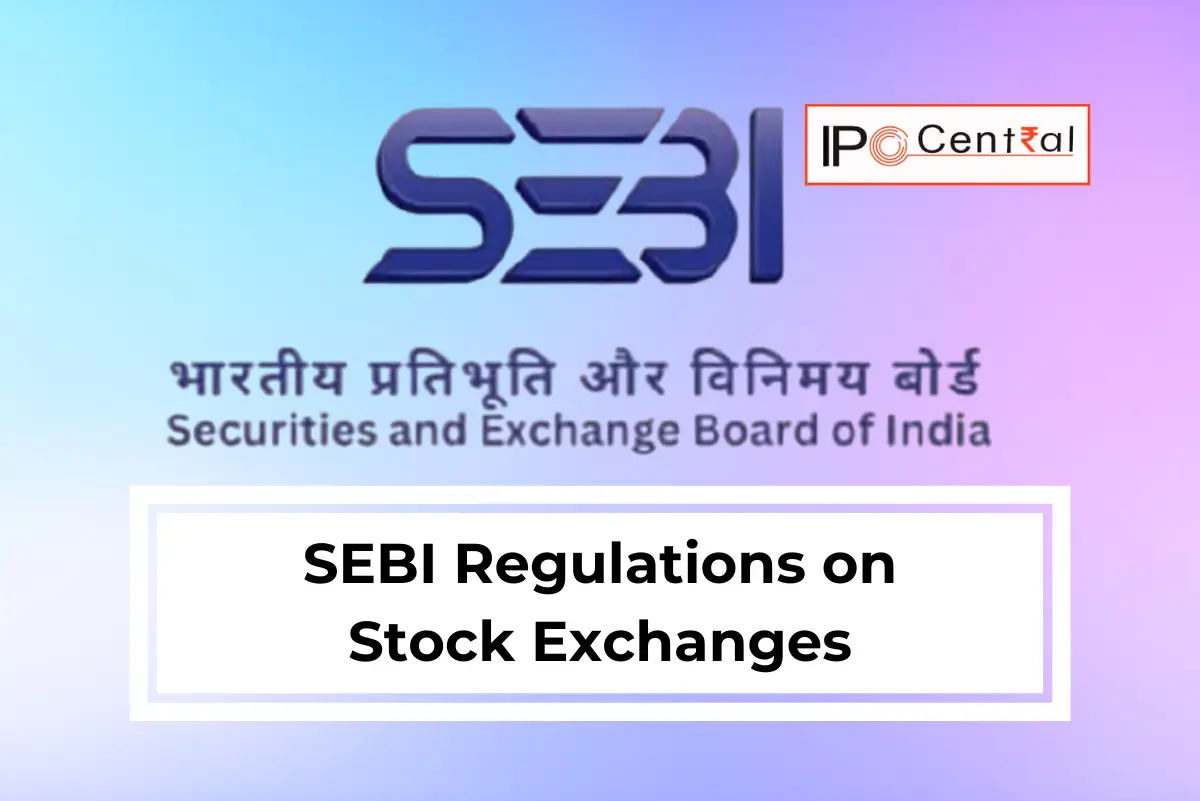The Securities and Exchange Board of India (SEBI) has played a pivotal role in shaping the landscape of the Indian stock market since its inception. Established on 12 April 1988, as a non-statutory body, SEBI was granted statutory powers through the SEBI Act 1992. This regulatory framework has evolved significantly over the years, adapting to the dynamic needs of the market and ensuring investor protection, market integrity, and transparency.

Table of Contents
Historical Development of SEBI Regulations
Over the last 20 years, SEBI has introduced several regulations that have significantly influenced the functioning of stock exchanges in India. Here are specific regulatory changes for the stock exchanges:
1. Framework for Electronic Trading: Following major scams, such as the 1990 securities scam and the Ketan Parekh scam in the early 2000s, which eroded investor trust, SEBI recognized the urgent need for reforms. In addition to several other measures to address this issue, SEBI worked towards introducing electronic trading that helped in reducing settlement cycle from 15 days to just 2 days. Shift to electronic trading also required stock exchanges to upgrade their technological infrastructure to support high-frequency trading, algorithmic trading, and real-time data dissemination.
2. Investor Protection Fund (IPF): The IPF mandated by SEBI, safeguards investors against financial losses due to defaults by brokers or trading members. Established by stock exchanges, it compensates investors for claims arising from such defaults. Contributions to the fund come from penalties, trading member fees, and exchange profits. A committee manages the fund, ensuring proper utilization of investor claims and education. Compensation is subject to a maximum limit set by SEBI, varying by exchange. The IPF also funds investor awareness initiatives like workshops and campaigns. Regular audits ensure compliance, reinforcing trust, market stability, and investor confidence in India’s financial markets.
It is worth highlighting that IPF by stock exchanges is different from IEPF which has a much wider mandate.
3. Strengthening Corporate Governance Standards: Before demutualization, regional stock exchanges in India were owned and governed by brokers, creating a mutual organization structure. Brokers acted as traders and decision-makers, leading to potential conflicts of interest. Trading was manual, with limited transparency and accountability.
Weak investor protection, fragmented markets, and inadequate capital further hampered their growth. These downsides necessitated demutualization to improve governance and competitiveness. Ultimately, SEBI mandated the corporatization and demutualization of stock exchanges through its circular SMD/POLICY/CIR-3/03. Regulations introduced by SEBI have mandated that stock exchanges enforce strict corporate governance norms among listed companies. This includes requirements for independent directors, audit committees, and enhanced reporting standards. These regulations are designed to foster accountability and protect shareholder interests, ultimately leading to a more trustworthy market environment.
4. De-recognition of Regional Stock Exchanges
One significant aspect of SEBI’s regulatory evolution has been the de-recognition of RSEs. Historically, India had numerous regional exchanges that facilitated local trading activities. However, many exchanges struggled with low volumes and operational inefficiencies due to increased competition from larger exchanges like the Bombay Stock Exchange (BSE) and National Stock Exchange (NSE).
In 2012, SEBI set stringent criteria for regional stock exchanges (RSEs), requiring a minimum net worth of INR 100 crore and an annual trading turnover of INR 1,000 crore. Exchanges failing to meet these criteria were given a two-year deadline to comply or face de-recognition. This regulation aimed at consolidating the number of operational exchanges and ensure only financially robust entities remain in the market.
De-recognition Process
In 2012, SEBI issued circular CIR/MRD/DSA/14/2012 outlining the process for the de-recognition and exit of underperforming stock exchanges. By 2014, SEBI began de-recognizing regional exchanges that did not meet prescribed criteria for trading volumes and operational standards. As part of its efforts to streamline India’s capital markets, several RSEs were either de-recognized or merged with larger exchanges by 2020. The terms for de-recognition are mentioned below.
- Exchanges may seek exit through voluntary surrender of recognition.
- Stock exchanges where the annual trading turnover on its platform is less than INR 1,000 crore can apply to SEBI for voluntary surrender of recognition and exit at any time before the expiry of two years from the date of issuance of this Circular.
- If the stock exchange is not able to achieve the prescribed turnover of INR 1,000 crores on a continuous basis or does not apply for voluntary surrender of recognition and exit before the expiry of two years from the date of this circular, SEBI shall proceed with compulsory de-recognition and exit of such stock exchanges, in terms of the conditions as may be specified by SEBI.
- Stock Exchanges which are already de-recognised as of date, shall make an application for exit within two months from the date of this circular. Upon failure to do so, the de-recognized exchange shall be subject to a compulsory exit process.
List of Stock Exchanges Operating in India
| Sr. No. | Name of the Stock Exchange | Recognition Valid Upto | Segments Permitted |
|---|---|---|---|
| 1 | BSE | Permanent | a. Equity b. Equity Derivatives c. Currency Derivatives (including Interest Rate Derivatives) d. Commodity Derivatives e. Debt f. Electronic Gold Receipt (EGR) |
| 2 | Calcutta Stock Exchange | Permanent | – |
| 3 | Metropolitan Stock Exchange of India | 15 Sep 2025 | a. Equity b. Equity Derivatives c. Currency Derivatives (including Interest Rate Futures) d. Debt |
| 4 | Multi Commodity Exchange of India | Permanent | a. Commodity Derivatives |
| 5 | National Commodity & Derivatives Exchange | Permanent | a. Commodity Derivatives |
| 6 | Indian Commodity Exchange | Permanent | – |
| 7 | National Stock Exchange of India | Permanent | a. Equity b. Equity Derivatives c. Currency Derivatives (including Interest Rate Derivatives) d. Commodity Derivatives e. Debt |
Impact of SEBI Regulations on Market Developments
- Positive Outcomes
- Consolidation of Trading: The merger of RSEs into larger exchanges led to increased liquidity and better price discovery mechanisms.
- Enhanced Regulatory Oversight: Fewer exchanges mean more focused regulatory oversight by SEBI, leading to improved compliance standards across the board.
- SEBI regulations prohibit insider trading, market manipulation, and other unfair practices, safeguarding investor interests.
- SEBI regulations provide mechanisms for investors to lodge complaints and seek redressal, ensuring accountability.
- Negative Outcomes
- Reduced Local Participation: The closure or merger of RSEs may limit access for local investors who prefer regional platforms for trading.
- Market Concentration Risks: Increased concentration in larger exchanges could pose systemic risks if not managed properly.
- Compliance with SEBI regulations can increase operational costs for listed companies, stock exchanges, and intermediaries.
Challenges and Opportunities for SEBI
As we move forward into an increasingly complex financial landscape, SEBI faces several challenges:
- Balancing Regulation with Innovation: Striking a balance between necessary regulation and fostering innovation remains critical. Over-regulation could stifle creativity among market participants while under-regulation might expose investors to risks.
- Adapting to Technological Changes: With advancements like blockchain technology and artificial intelligence reshaping financial markets globally, SEBI must adapt its regulatory framework accordingly.
- Enhancing Investor Protection: As retail participation grows in the Indian stock market, a continued focus on investor education and protection is essential.

Read Also: IPO allotment basis to change soon, SEBI indicates
Conclusion
The evolution of SEBI regulations reflects India’s journey towards establishing a robust and transparent securities market. From its early days as an executive body to becoming a powerful statutory authority overseeing complex trading activities today, SEBI has made significant strides in promoting investor confidence and market integrity. As it navigates future challenges while embracing growth opportunities, SEBI’s role will remain crucial in shaping the landscape of India’s capital markets well into the future.






































